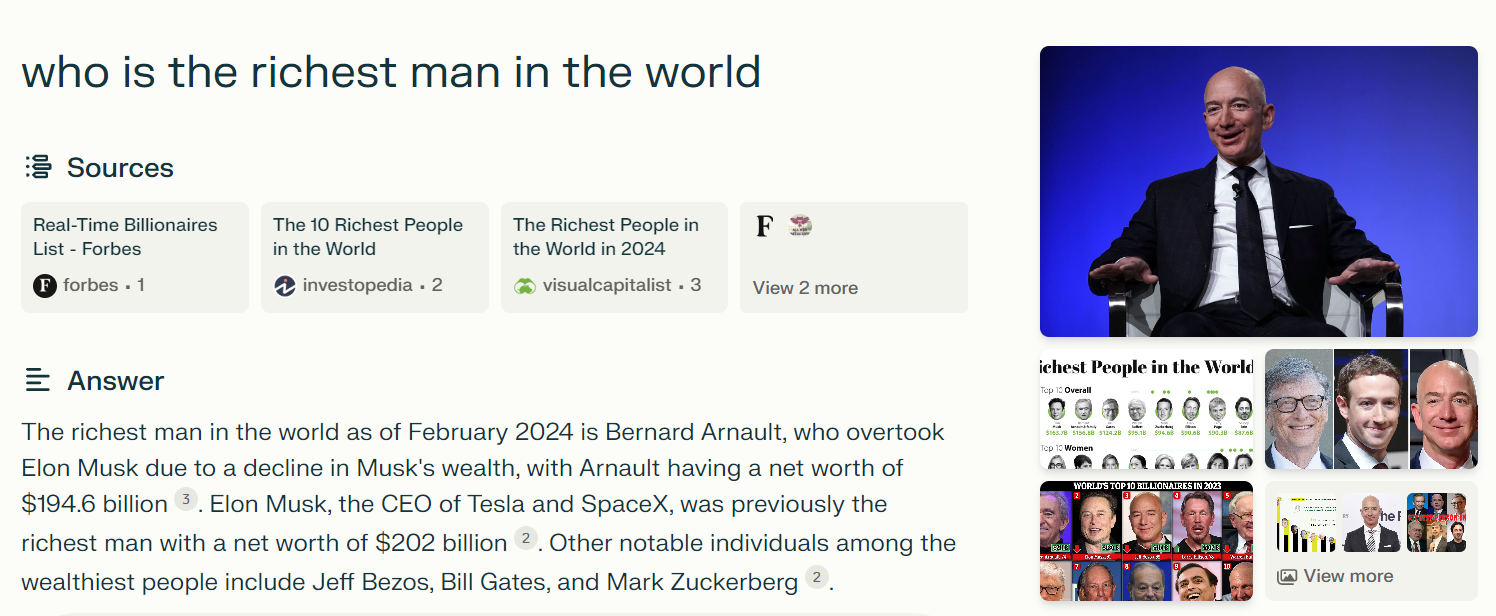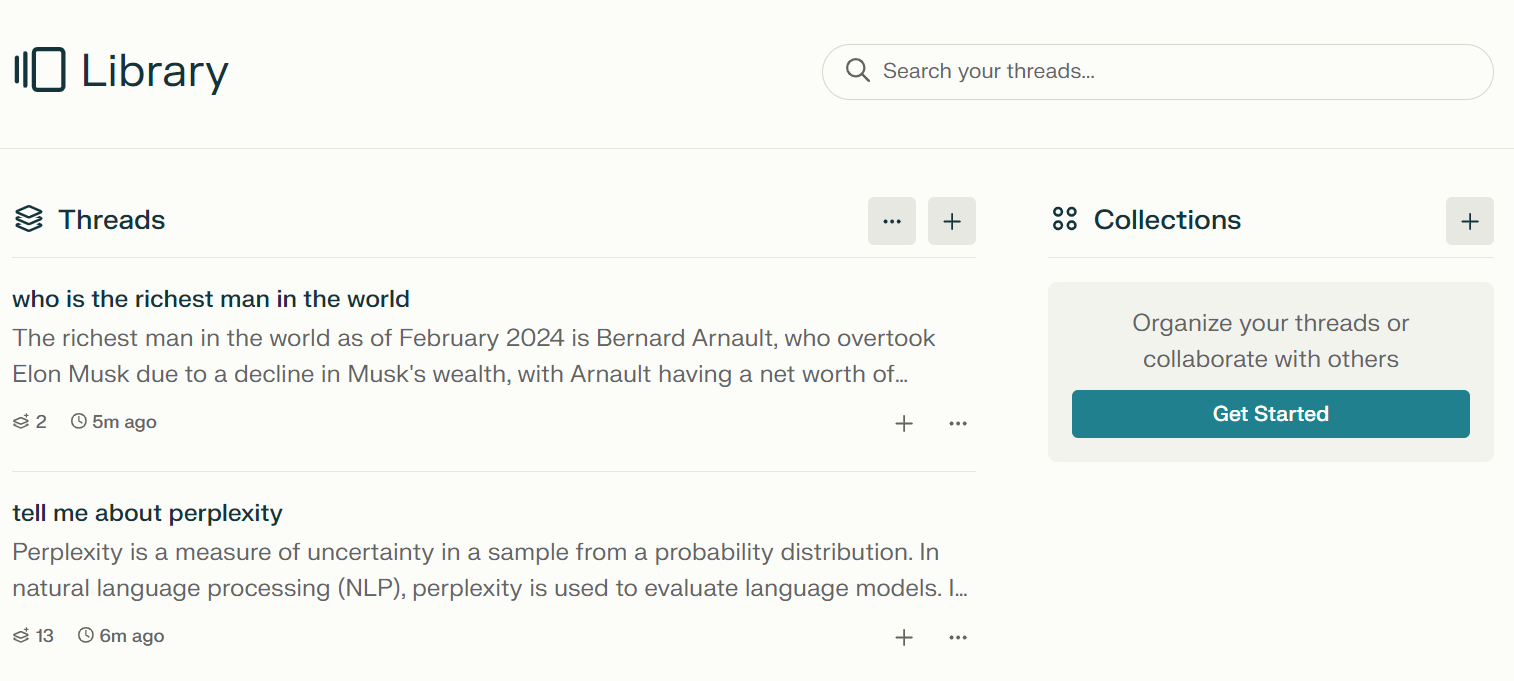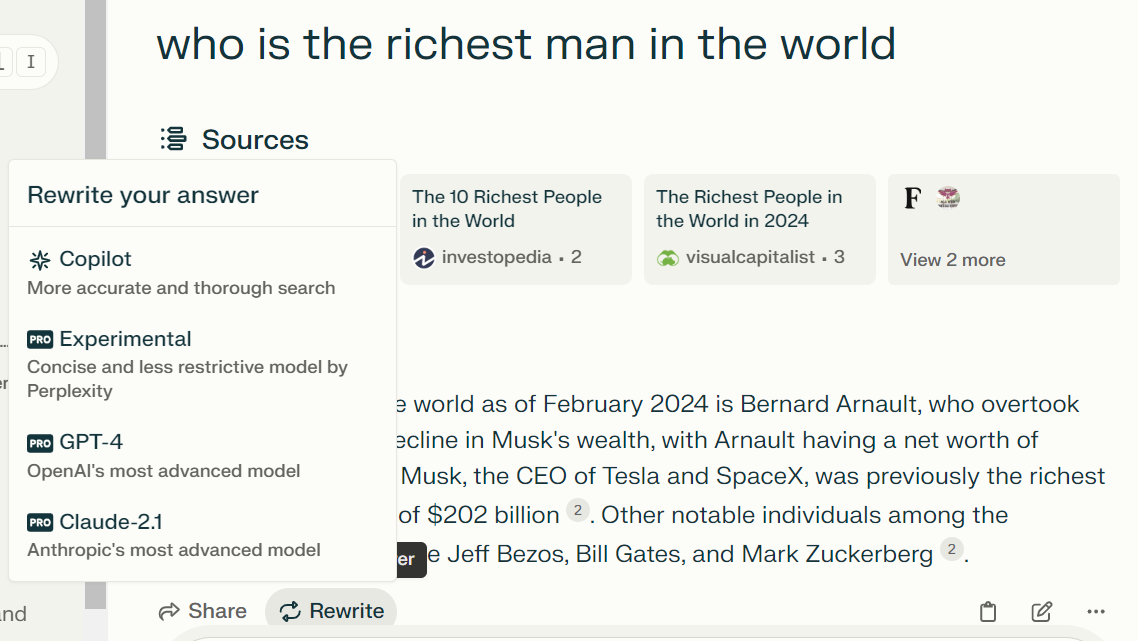You’ve heard of Google. You’ve heard of ChatGPT.
But you would never have seen this coming – a mashup of the two.
Perplexity AI takes the best of both worlds and combines it into one, acting as a search engine that answers you like ChatGPT.
Confused? Let me explain in greater detail.
Perplexity AI
Perplexity AI isn’t new, but it is an innovative conversational search engine that aims to provide a more accurate and relevant search experience compared to traditional search engines like Google.
Released in December 2022, it was created by former employees of OpenAI, Google, and Meta, you can be assured this AI brings heat.
It utilises a chatbot-style interface, kind of like ChatGPT. This allows users to ask questions in natural language, and it responds with cited information and sources from the web.
Basically, you’re interacting with a computer as if you’re conversing with a human. A really knowledgeable human.
How neat is that?
Perplexity AI leverages large language models similar to ChatGPT but with a powerful twist – it directly cites its sources. This means that you get verifiable information, adding a level of trustworthiness and transparency missing in a lot of other chatbots.

By clearly citing its sources, Perplexity AI aims to reduce the spread of misinformation. It is also very quick in providing responses and presents you with a well-organised answer summarising key information, saving you lots of precious time.
Perplexity AI stands to be a tough rival for Google as for lazy people, Perplexity AI offers exactly what we want. We can get a summarised answer without even having to click on anything. We can even view the text answer and images side by side in an easy-to-see format.
Additionally, one of the best parts is that it understands conversational flow, allowing you to refine your search or ask follow-up questions for greater clarity.

Notice how I said “tell me more about him” instead of “tell me more about Bernard Arnault”? This demonstrates Perplexity AI’s ability to understand the flow of conversation. It understands that the “him” I speak of refers to the man I previously asked about.
Google could never.
In Library, you can also view everything you previously searched for. You can even make collections of threads to organise them, and collaborate with others.

This AI model is also designed to offer accurate and contextually rich outputs, and aims to do even better than Google.
And honestly, after using Perplexity AI, I can see that it will definitely be a big threat to Google.
How does it intend to do that? Well, the answer is in its name.
About Perplexity
In the realm of language modeling and machine learning, perplexity is a measure of uncertainty. It’s inversely proportional to the probability that a model assigns to a set of outcomes or sequence words. In other words, a model with lower perplexity can predict with greater certainty.
Perplexity AI uses this principle and tries to minimise the perplexity value as much as possible, resulting in a model that can generate text or predict outcomes with higher confidence and accuracy. This, in turn leads to responses that are more contextually relevant and grammatically correct.
Perplexity AI is not only competent in understanding language nuances, but is also equally competent in translating between languages and providing informative responses to a wide range of questions. Think of it as having an AI extension that enhances your browser with an advanced grasp of language.
Despite being relatively new in the AI realm, Perplexity AI has already caught the attention of prominent companies in the venture capitalist space. Mobius and Sequiona have both invested in Perplexity AI, signalling confidence in its innovative approach and future prospects.
Think Perplexity AI already sounds very good? Well, they take it a step further with Perplexity Pro.
Available at just S$20 a month or S$200 a year, Perplexity Pro gives you access to unlimited Copilot queries and file uploads.
Instead of quick, generic results you get from Quick Search, Perplexity Copilot goes further. It asks for details, considers your preferences, dives deeper, and then delivers pinpoint results.
This saves you time on going through multiple tabs and irrelevant links.
It offers a personalised, comprehensive search experience that understands you through follow-up questions, summarises the most relevant findings, and pulls from a diverse range of sources for a complete view.
Perplexity Pro also gives you unlimited file uploads. You don’t have to go through the task of directly copy-pasting everything from the file into Perplexity Pro!
You can upload files in plain text, code, or PDF format, and Perplexity Pro will utilise the file contents to formulate answers. After uploading a file, you can ask Perplexity Pro to summarise a PDF, explain code, or translate files.
For now, only textual files up to 25MB can be uploaded. Ways to upload files with images and other multimodal file types are still being researched.
While signed in users using the free version can upload up to three files per day, Perplexity Pro subscribers can upload unlimited files daily, even over 100 files.
Perplexity Pro subscribers will also be able to fully utilise the AI for their needs by using smarter models like Claude-2.1 and GPT-4 to suit their needs.
As different AI specialise in different areas like text processing and language support, being able to choose which AI generates your answer can help in providing you with the best possible answer you need.

It seems this new contender is ready to challenge everything we know about search engines and AI chatbots, showing us a whole new side of the powerful potential of AI.
Who knows, in five years, everyone might be using Perplexity instead. Google might just become a thing of the past.



